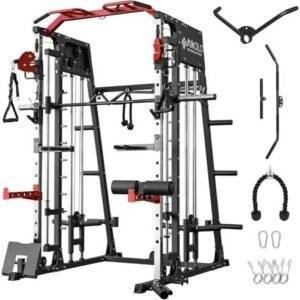In recent years, the healthcare landscape has witnessed a significant paradigm shift, largely attributed to the advent of wearable technology. As health monitoring evolves from traditional practices to more sophisticated, real-time tracking systems, wearables have emerged as pivotal tools in fostering proactive health management. This article delves into the transformative effects of wearable technology on health monitoring, exploring its multifaceted applications—from personal fitness tracking to chronic disease management—and the implications for patient engagement, data analytics, and preventative care. By examining the technical innovations and integration of these devices within broader healthcare ecosystems, we aim to elucidate how wearables are not just augmenting but revolutionizing the way healthcare professionals and individuals approach health maintenance and disease management in an ever-connected world.
Table of Contents
- Emerging Trends in Wearable Health Technologies
- Integration of Wearable Devices with Health Management Systems
- Enhancing Data Accuracy and User Engagement in Health Monitoring
- Future Directions and Recommendations for Sustainable Wearable Technology Development
- In Conclusion
Emerging Trends in Wearable Health Technologies
The landscape of wearable health technologies is rapidly evolving, introducing innovative features that enhance user engagement and promote proactive health management. Smart textiles embedded with sensors are gaining traction, allowing for continuous monitoring of vital signs without the bulk of traditional devices. These fabrics can track metrics such as heart rate and temperature, providing real-time data to users and healthcare professionals. Besides smart textiles, developments in biometric sensors are leading the charge, integrating more advanced technology that provides insights into metabolic functions, hydration levels, and even stress indicators, fostering an informed approach toward personal wellness.
Furthermore, the integration of AI algorithms with wearable devices is paving the way for personalized health insights, predictive analytics, and tailored interventions. These algorithms analyse trends in user data to offer customized suggestions for lifestyle changes or alert users to potential health issues. The proliferation of interconnected devices is creating a holistic health ecosystem, where wearables communicate seamlessly with smartphones and other smart home devices. This connectivity supports a comprehensive health monitoring experience, allowing users to gain a multifaceted understanding of their well-being while facilitating more efficient patient care through shared data and insights.
Integration of Wearable Devices with Health Management Systems
The is revolutionizing how individuals monitor and manage their health. By harnessing the power of real-time data collection, these devices—ranging from fitness trackers to advanced smartwatches—allow users to gain insights into various health metrics. This data facilitates personalized health management that can lead to more effective interventions. Key features include:
- Continuous Monitoring: Wearables track vital signs, activity levels, and sleep patterns around the clock.
- Data Synchronization: Wearable devices seamlessly sync with health management applications to provide comprehensive health profiles.
- Alerts and Notifications: Immediate notifications for abnormal health metrics enable timely medical responses.
Moreover, health management systems can leverage this influx of data to create predictive models that enhance patient care. By analyzing patterns, healthcare providers can offer tailored recommendations, improve chronic disease management, and even facilitate remote patient monitoring. The synergy between wearable technology and health systems is exemplified in simple data comparisons, as shown in the table below:
| Wearable Feature | Health Outcome |
|---|---|
| Heart Rate Monitoring | Early detection of cardiac issues |
| Activity Tracking | Improved physical fitness |
| Sleep Analysis | Enhanced mental well-being |
Enhancing Data Accuracy and User Engagement in Health Monitoring
As wearable technology continues to evolve, it plays a pivotal role in improving the accuracy of health data collected from users. Devices such as smartwatches, fitness trackers, and specialized health monitors provide real-time data that is critical for both users and healthcare professionals. The integration of advanced sensors and algorithms helps in capturing vital information including heart rate, sleep patterns, and physical activity levels with enhanced precision. This accuracy not only contributes to better personal health management but also supports clinical decision-making, allowing for timely interventions. The data collected can be harnessed through cloud platforms, enabling seamless sharing between patients and healthcare providers.
Moreover, user engagement is significantly bolstered by the interactive nature of modern health monitoring devices. By offering personalized feedback and recommending actionable insights, wearables keep users actively involved in their health journeys. Features such as setting reminders, joining challenges, or engaging in community health initiatives foster a sense of accountability. To illustrate the benefits of engagement, consider the following table that outlines key features of popular wearable technologies:
| Device | Engagement Features | Data Accuracy |
|---|---|---|
| Smartwatch | – Activity reminders – Health alerts |
High |
| Fitness Tracker | - Goal setting – Social sharing |
Moderate |
| Sleep Monitor | – Sleep reports – Sleep coaching |
High |
Future Directions and Recommendations for Sustainable Wearable Technology Development
The future of sustainable wearable technology hinges on the integration of eco-friendly materials and innovative design practices. As the demand for health monitoring devices continues to grow, manufacturers should prioritize the use of biodegradable, recyclable, and renewable materials. Implementing a circular economy model in the production process can significantly reduce waste and environmental impact. Key recommendations include:
- Investing in research to develop bioplastics and other sustainable materials that are both functional and environmentally friendly.
- Collaborating with recycling companies to ensure the proper disposal and reuse of old devices.
- Designing with modularity in mind, allowing users to easily replace specific components rather than discarding the entire device.
Furthermore, enhancing the energy efficiency of wearable devices is essential for promoting sustainable practices. This can be achieved by focusing on low-power consumption technologies and advanced battery solutions. Additionally, the incorporation of smart charging systems that optimize power usage based on user behavior can prolong device life. The following table summarizes potential strategies for energy efficiency:
| Strategy | Description |
|---|---|
| Low-Power Sensors | Utilizing sensors that require minimal energy for tracking health metrics. |
| Energy Harvesting | Incorporating technologies that convert body movement or ambient energy into usable power. |
| Smart Power Management | Employing algorithms that optimize battery life by adjusting performance based on user activity. |
In Conclusion
the advent of wearable technology has heralded a new era in health monitoring, fostering a paradigm shift that transcends traditional healthcare modalities. With the integration of advanced sensors, artificial intelligence, and data analytics, wearables are not merely tools but sophisticated systems that facilitate continuous patient engagement, real-time data collection, and proactive health management. As we advance into an increasingly data-driven future, it is imperative for healthcare practitioners, technologists, and policymakers to collaborate in harnessing the full potential of these devices, ensuring they augment clinical decision-making and enhance patient outcomes. The ongoing evolution of wearable technology promises not only to transform individual health practices but also to reshape the broader landscape of preventive care, ultimately leading to healthier populations and a more efficient healthcare ecosystem. Continued innovation, rigorous research, and a commitment to interoperability will be critical in addressing existing challenges and realizing the future potential of health monitoring technologies.





